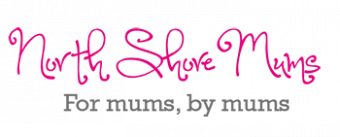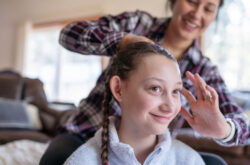More than half of young Australians have experienced cyberbullying[1]. Here’s some ways to work with your child and tackle the problem- together and talk about cyberbullying with kids.
Six key steps to talk about cyberbullying with kids
- Listen calmly to what your young person wants to say and make sure you get the full story.
- Reassure your young person that they are not to blame and ask open and empathetic questions to find out more details.
- Ask your young person what they want to do and what they want you to do.
- Discuss some sensible strategies to handle the bullying with your young person.
- Contact the school and stay in touch with them.
- Check in regularly with your young person.
What if you are experiencing cyberbullying?
It is important you talk to someone you trust straight away – like a parent, sibling, uncle/aunt, teacher or friend. You can also seek support at headspace through face-to-face, online or telephone services.
- Do not retaliate or respond to the online bully.
- Block the bully and change your privacy settings.
- Report the abuse to the service and get others to as well.
- It’s also important to do something you enjoy to keep a healthy mind set. Catch up with friends, listen to music, play sport or chat online to the people you can trust.
- Collect evidence – keep mobile phone messages, take screen shots and print emails or social networking conversations.
- You can always find some helpful resources at esafety.gov.au or headspace.org.au.
What if a friend is being cyberbullied?
If you have a friend or know someone at school who is being cyberbullied:
- Don’t join in – don’t comment on posts, images or videos.
- Don’t forward or share posts, images or videos that will hurt others.
- Leave negative groups and conversations.
- Report bullying to someone that can help – this can be an anonymous report to a parent or teacher.
- Support your friend online and offline. You could say:
- ‘I heard about the posts, you don’t deserve it, I’m here for you.’
If you know someone at school who is impacted as a result:
- Suggest they talk to their family or confide in an adult they trust.
- Try inviting your friend to undertake some of the 7 tips for a healthy headspace with you – doing stuff that’s important to them, learning new ways to handle tough times, build close and connected relations, eat well, stay active, sleep enough and cut back on alcohol and other drugs.
- Access help online through eheadspace or face-to-face in a headspace centre.
What strategies can parents suggest to their young person who is being bullied online?
You can suggest your young person should:
- Avoid responding to the bullying.
- Block and report anyone who is bullying online.
- Protect yourself online – use privacy settings and keep records.
- Encourage them to do something they enjoy to keep a healthy mind set. Catch up with friends, listen to music or play some sport.
Other things to remember:
- Parenting is still the key. Although we are posting information today specifically about the online world, many or even most of the general parenting, teaching or other leadership skills and approaches you use as parents still apply. These include working on good communication with your young person, helping them engage in normal developmental challenges like school, work, hobbies, social relationships.
- Building communication and trust is key to setting safe boundaries. New challenges can arise as your young person moves through adolescence due to puberty and other influences. However, keeping or improving the trust between you, making time to listen without interruptions, showing understanding of your young person’s perspective and modelling and teaching negotiation, are all fundamental to setting boundaries with your young person.
- You’re not alone in having concerns about the online world. We are contacted about these issues frequently.
- Share with other parents. Use forums. If your young person is school age, we encourage you to talk to other parents, teachers, as well as contribute to parent associations and school councils and talk about developing shared boundaries where possible, protocols about how parents use social media and more.
- Set an example. Your own social media use sets an example too. Be thoughtful about your online presence and use of technology and willing to change your habits if that’s needed. Sometimes inadvertently parents can inflame issues with young people and schools. (if your young person is at school) Keep to the principles of: calm and fair communication, go directly to someone you need to discuss something with, ask for someone with skills in mediation to run or join meetings if you have concerns how the conversation will go.
- Schools and parents working together is important. Teachers are in a key position but are generally very time poor too. It’s reasonable to expect your school to have or to develop policies that assist you in your work. Also you will see from our session today that the Office of the eSafety Commissioner has a lot of resources for educators.
- Be proactive. Focus on your overall relationship with your young person, how you communicate with your young person, and your young person’s mental health. Learn the warning signs so you can notice if something isn’t right. Regularly check in with your young person to see how they are travelling.
- Be persistent. Although it can be difficult being a parent, try not to be discouraged if your first attempt fails or feels awkward. For practical tips on the warning signs and starting the conversation, visit: org.au/friends-and-family/mental-health/.
About headspace
headspace is the National Youth Mental Health Foundation providing early intervention mental health services to 12-25 year olds. headspace has 109 centres across Australia in metropolitan, regional and remote areas, as well as online and phone support services through eheadspace. headspace can help young people with mental health, physical health (including sexual health) alcohol and other drug services, and work and study support. Centre details, as well as factsheets and resources for young people and their families and friends, can be located on the headspace website.
[1] headspace National, National Youth Mental Health Survey (2018)












